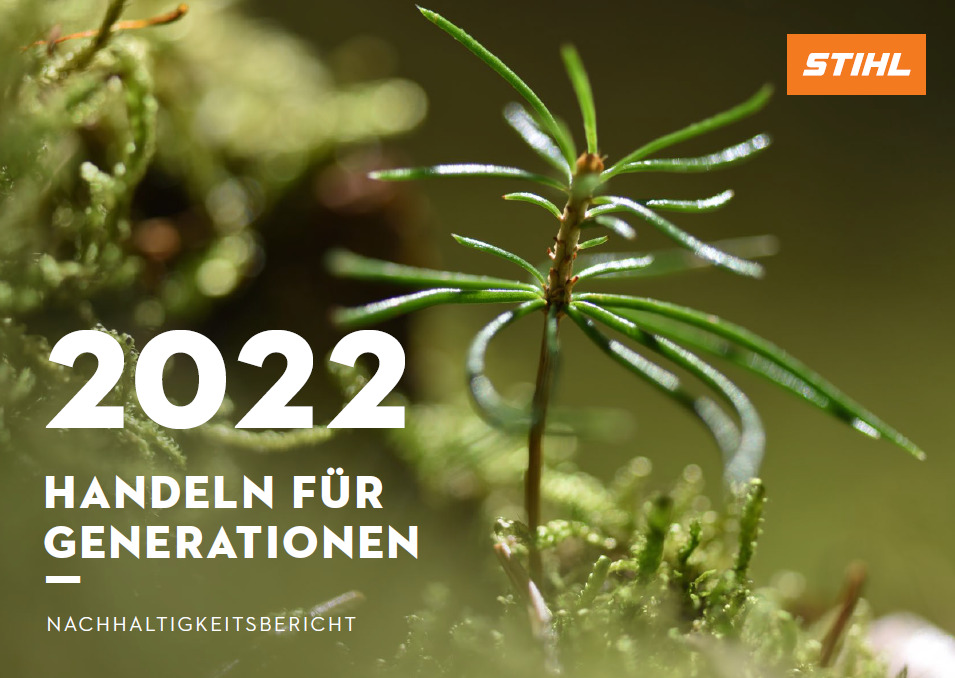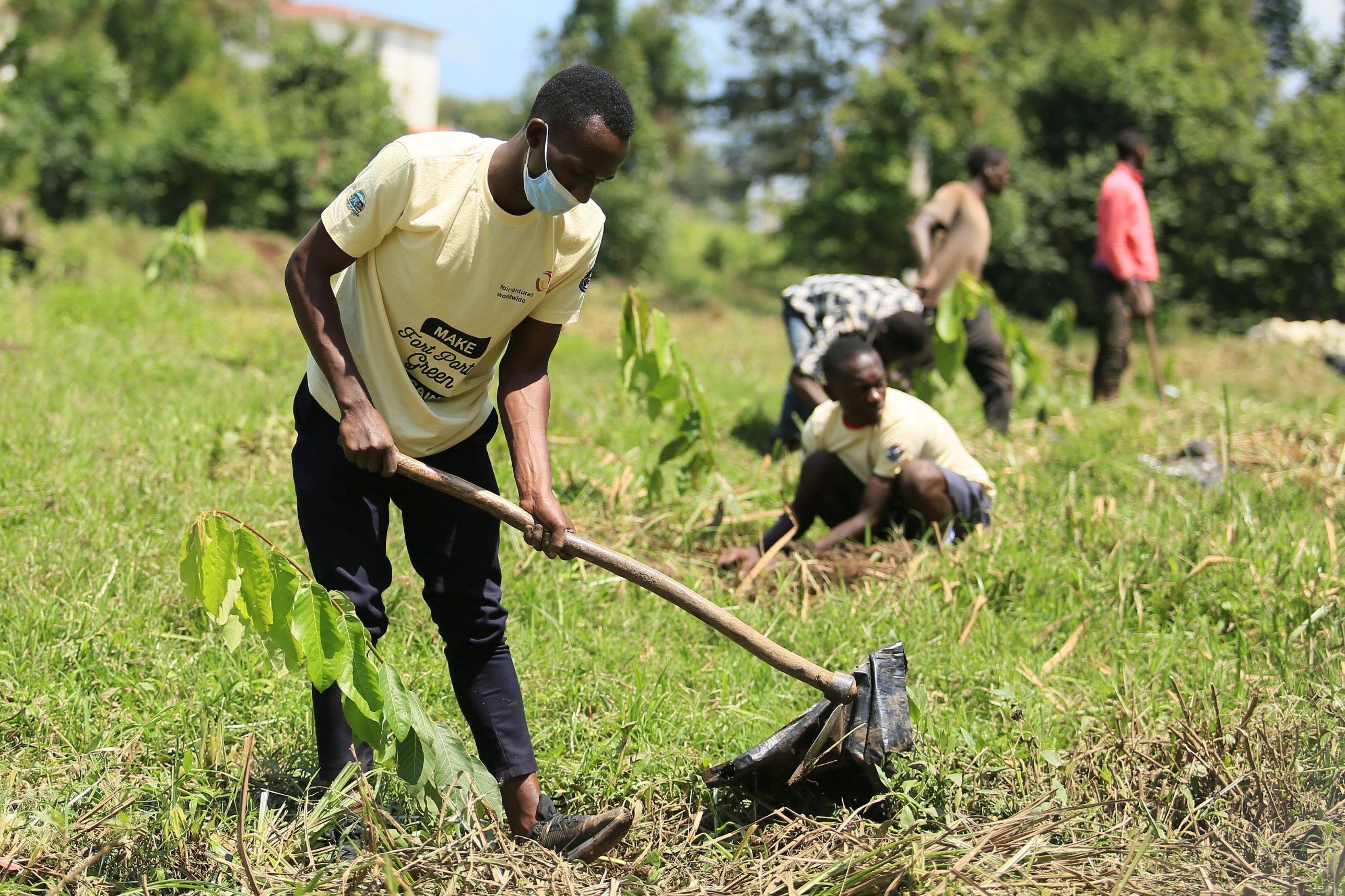Waiblingen, 16.05.2024 | Corporate Press Release
Acting for tomorrow: STIHL publishes Sustainability Report 2023
STIHL has published its third sustainability report, detailing the progress and targets the family-owned business has achieved in 2023 in its focal areas of ecosystems, circularity, and care.
The sustainability report, which has been published online, sets out the measures STIHL took last year to move closer to achieving its sustainability goals. Among the most important achievements is that STIHL international sales companies’ direct CO2 emissions are now offset through offsetting projects. A potential analysis launched in 2023 to increase the proportion of secondary raw materials is progressing, as is a feasibility study for a product based entirely on the circular economy principles. In terms of social responsibility, STIHL has further strengthened its level of engagement in the supply chain. “At STIHL, we mainly understand sustainability as a form of responsibility — for the environment, for people, and for the long-term development of our company,” said Dr. Michael Prochaska, Executive Board member for Human Resources and Legal Affairs and the man in charge of sustainability at STIHL. “We are consistently pursuing the path we began a long time ago, but we are still far from reaching our destination. Sustainability is our mission, and is our shared inspiration for transformation and innovation.”
Ecosystems: Lower emissions, greater biodiversity
Almost all STIHL production and sales companies have been greenhouse gas neutral (Scope 1 and 2) since the end of 2023. This was achieved primarily through the gradual switch to green electricity since 2021 and a mix of carbon offsets and CO2 capture through agroforestry. At the same time, more and more STIHL locations are generating their own electricity from renewable energy. For example, new photovoltaic systems were installed at STIHL in Qingdao, China, in Brazil and in Ludwigsburg, Germany, all of which help to reduce emissions and at the same time strengthen security of supply.
On average, the use phase accounts for 60 to 90 percent of STIHL products’ emissions. Battery-operated products tend to lie on the lower end of the scale, depending on the local electricity mix. That is why the primary focus is on calculating Scope 3 emissions from the use of sold products. To this end, factors influencing these emissions are currently being determined, and measurement methods developed and validated.
In 2023, total energy consumption (Scope 1 and 2) fell by around 15 percent year on year. One of the main reasons for this was the general economic situation last year that caused a decline in sales and led to an adjustment in production. Similarly, greenhouse gas emissions also fell.
STIHL aims to reduce the use of natural gas and oil by 40 percent by 2030 compared to 2019 levels. Some subsidiaries have already implemented their first measures in this regard. Last year, the Swiss chain plant converted the gas-fired heating on one of the hardening lines to electric heating elements for example, which equates to a saving of 2,400 megawatt hours of gas or a reduction in CO2 emissions by 480 tons per year.
Biodiversity is also a central concern of the STIHL sustainability strategy. In 2023, a project looking into the challenges associated with biodiverse land use in local communities was completed, generating numerous ideas for new products that will be necessary for future harvesting and cultivation techniques. STIHL has already presented the first prototypes to the communities.
Circularity: Less plastic, better recycling
STIHL’s sustainability efforts are focused on the circular economy in order to use as few primary raw materials as possible and minimize waste. Products and processes are to be further optimized with this in mind. To this end, we launched a pilot project in late 2022 to investigate the potential for developing a clearing saw that is fully circular in terms of its manufacture and use. In 2023, STIHL began analyzing potential for increasing the share of secondary raw materials in its products. The first step of this process involved defining the most important fields of action and researching solutions already established on the market; the results of this research are currently being assessed.
STIHL also stepped up its efforts in various projects aimed at reducing plastic in packaging. At the German STIHL sites, for example, new spare parts packaging with a 20 percent reduction in foil thickness was introduced last year. In addition, the viewing window on chain packaging is being removed on a gradual basis. Switching to mono-materials is helping to reduce plastic use, and has a positive effect on the packaging recyclability.
Care: Sustainable supply chains
The report also emphasizes social sustainability aspects, such as the promotion of diversity and social development or the implementation of a responsible supply chain: In the reporting year, the focus here was on expanding a global sustainable supply chain network in order to promote the concept of sustainable supply chains among purchasing departments and at production companies.
All sustainability activities are described in the STIHL Sustainability Report 2023. It was prepared in accordance with the Sustainability Reporting Standards of the Global Reporting Initiative (GRI) and is available online at STIHL Sustainability Report 2023.


